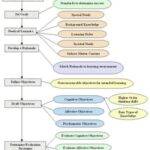Title: Babushka’s Doll
Author and Illustrator: Patricia Pollacco
Suggested Grade Level: 3rd grade
Strategy: Writing a summary
Objectives: Students will be able to summarize the main events of a story.
Materials Required: Book Babushka’s Doll, globe or map of the world, summary poster
Standards addressed: E2a Produce a report of information.
E2b Produce a response to literature.
E3a Participate in one-to-one conferences with the teacher
E5a Respond to fiction using interpretive and critical prosesses
Before Reading:
Prepare: Ask children if anyone knows where Russia is. If anyone raises their hand, have them come up and point out Russia on the map or globe. If not, or if the child gets it wrong, show the class where it is. Explain that today we will be reading a story about a Russian family. Ask students if any of their families come from Russia (text to self connection. Next tell students that we will be summarizing the book. Explain that summarizing is a way to state the main events of a story in a short way. Tell the class that you might summarize a book when telling someone else what the book was about.
Introduction: Do a picture walk:
Pages 1-4: Show children how Babushka is washing clothes and then hanging the laundry on a clothes line. Talk about how in the past, as well as in some places today, people wash their clothes by hand and hang up their laundry to dry. In the past, there were no washing machines or drying machines.
Pages 5 and 6: Show children how Babushka is feeding the goats. Talk about how many families live on farms and raise goats and other animals. This ties in with the students’ social studies lessons. (Communities around the world-3rd grade. Text-to-text connection)
Page 12: “It looks the doll is dancing. She must be an interesting doll.”
Page 13: “It looks like they’re having fun.”
Page 15: “Here they don’t look too happy. The doll looks like she’s screaming and the girl looks tired or stressed out.
During Reading:
The class will go through two readings. The second reading will be a little faster, and will serve mainly to assist students in remembering what happened in the book so they can summarize it.
-1st reading
Turn-and-talk: ask students what they usually do with their grandparents. Have them talk to their neighbor about this question and observe them. At end of book, Turn and talk: What do you think Natasha learned? Do you think she might be more patient and understanding next time she sees Babushka busy?
– 2nd reading:
Students should have their notebooks out. Tell them to jot down any details in the story that they think are important as you are reading the story. Summary: After reading the first 5 pages, stop and ask children, “Now let’s try to summarize the pages we just read.” Ask children to turn and talk to their partner about what happened in the story so far. Say to students, “How can we say, in one sentence, what just happened?” Students should come up with something like: “Natasha was impatient and wanted Babushka to play with her, but Babushka was busy.” Continue reading until page 10. Ask students what just happened. Students should come up with something around, “During lunch, Babushka let Natasha play with her doll.” Read until page 20. Stop for a moment to go over what just happened. Ask students to list the things Natasha did with the doll. “Natasha ran with the doll, pushed her in the swing, and pulled her in the goat cart.” Page 24: “The doll wanted to eat. She made such a mess and wanted Natasha to clean and iron her dress. Natasha started crying because the doll was asking her to do too much.” End of book: “Natasha learned that it’s good to be patient and respect the feelings of others.”
After Reading:
Remedial Learners:Have them fill out a ‘who, what, when, where, why, and how’ chart. Then show them how to put those sentences together into a paragraph which summarizes the book.
Extend: Students can practice summarizing by writing a short paragraph about the main ideas in the day’s social studies and science lessons. In addition to that:
-Social Studies: Teach a lesson on Russia and its culture. -Art: Students can decorate eggs (or pictures of eggs) in the style of Russian eggs. They can use the many patterns in the book Babushka’s Doll as a starting point for ideas.
Assess:
During independent reading, ask students to summarize the story they have read. Ask students to leave out what happens at the end of the book. When they are finished with their summaries, have them exchange papers with the student they sit next to, to get students excited about different books. Alternatively, choose a few students to come up front and read their summary to the class.
Vocabulary words: naughty, precious, laundry, kettle, groceries, frightened, pounded, ironed


